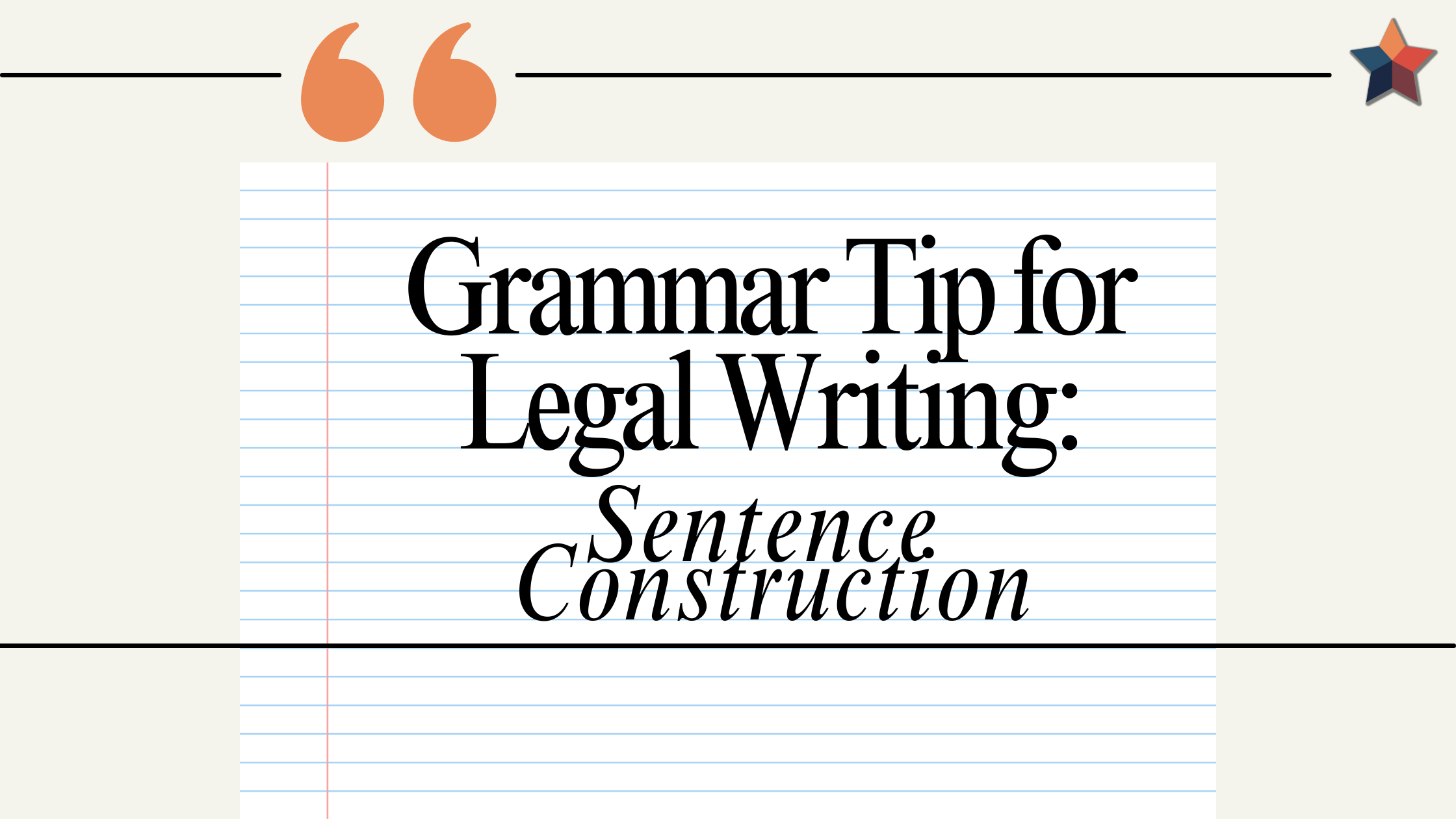Common Issues in Sentence Construction
Published on July 22, 2024 From The Editors

As a legal professional, communicating effectively is of the utmost importance. Keeping your writing grammatically correct, even in something as small as an email making lunch plans, is a great way to ensure you appear professional and put together at all times.
In this grammar tip, I’ll go over a few common mistakes with sentence construction and ways to remedy them.
Avoiding Sentence Fragments
A sentence fragment, or incomplete sentence, is usually a phrase or clause that has become disconnected and does not express a complete thought on its own. Often, the easiest way to identify a sentence fragment is to take it out of context and ask, “does this make sense by itself?”
Let’s look at a few examples.
We have lots of drinks in the cooler. Including soda, water, and juice.
Here, the second sentence is actually a dependent clause—if you read it out of context, you would probably ask, “what includes soda, water and juice?” Fortunately, this is an easy fix:
We have lots of drinks in the cooler, including soda, water, and juice.
Here’s another example:
He was late to court. Because his car battery died.
Again, the second sentence here is a dependent clause. Here’s a correct way to revise it:
He was late to court because his car battery died.
Avoiding Run-ons
Contrary to popular belief, a run-on sentence isn’t just a sentence that’s too long. It’s perfectly possible to write a lengthy sentence, comprising many phrases and clauses, that’s still grammatically correct. Run-ons, however, occur when two or more independent clauses are strung together improperly, causing your writing to sound muddled.
Let’s look at an example:
He loves music his favorite genre is classic rock.
In the sentence above, we see two independent clauses that have been squished together to create a run-on. There are a few different ways to separate them into something more readable and grammatically correct.
He loves music. His favorite genre is classic rock.
Here, we’ve just separated the clauses into two simple sentences. If you’re looking for a foolproof way to avoid run-ons, writing in simple sentences (with a single subject and predicate) is an easy way to do so. Some variety is always good, though, so let’s check out another way to edit this sentence.
He loves music, and his favorite genre is classic rock.
Using a comma with a coordinating conjunction is a great way to connect two independent clauses. For, and, nor, but, or, yet, and so are all acceptable for this purpose, depending on the context and relationship between the two clauses.
Semicolons can also be substituted for the comma + coordinating conjunction combo:
He loves music; his favorite genre is classic rock.
Make sure to use a semicolon and not a comma here—linking two independent clauses with a comma is called a comma splice and considered incorrect.
Avoiding Issues in Sentence Construction
Often, the best way to check if a sentence makes sense is to just read it back to yourself. Make it a habit to slow down and take time to check over your own writing before hitting “send” or printing that document—it can save you countless headaches!

Casey Ellis
Casey Ellis is an editor at Texas Bar Books. She holds a Bachelor's of Journalism from the University of Texas at Austin. In her free time, you can usually find her watching baseball, cooking, or reading.